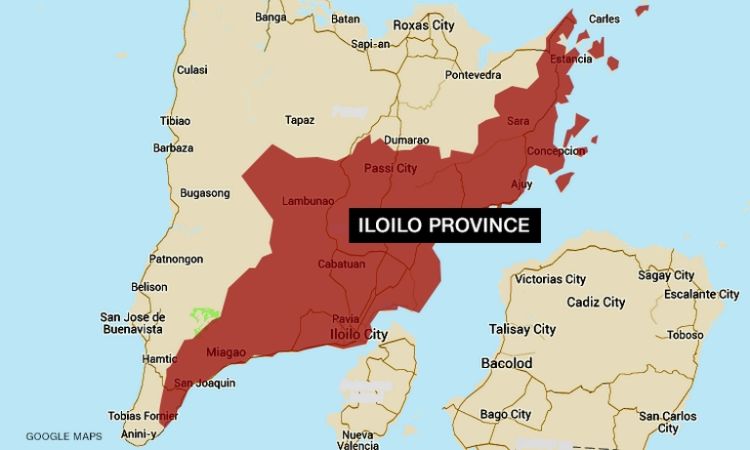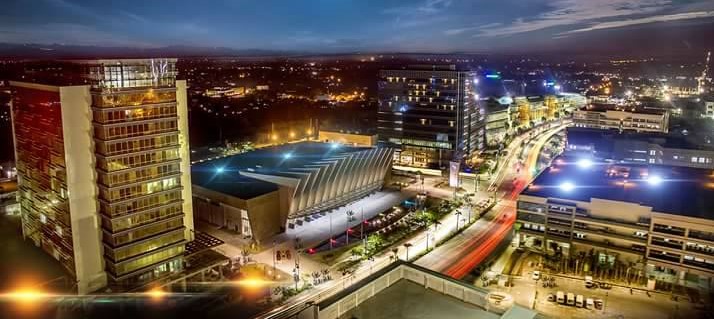Iloilo (locally [ɪlo.ˈilo]), officially the Province of Iloilo (Hiligaynon: Kapuoran sang Iloilo; Kinaray-a: Kapuoran kang Iloilo; Tagalog: Lalawigan ng Iloilo), is a province in the Philippines located in the Western Visayas region. Its capital is the City of Iloilo. Iloilo occupies a major southeast portion of the Visayan island of Panay and is bordered by the province of Antique to the west, Capiz to the north, the Jintotolo Channel to the northeast, the Guimaras Strait to the east, and the Iloilo Strait and Panay Gulf to the southwest.
Just off Iloilo’s southeast coast is the island province of Guimaras, once part of Iloilo but now an independent province. Across the Panay Gulf and Guimaras Strait is Negros Occidental, occupying the northwestern half of the larger island of Negros. Iloilo City, its capital, is geographically located in the province and is grouped under the province by the Philippine Statistics Authority but remains politically independent from the provincial government. According to the 2020 census, the population of the province (excluding Iloilo City) is 2,051,899. If Iloilo City is included, the population is 2,509,525 in total.
The province covers a total area of 5,000.83 square kilometres (1,930.83 sq mi)[9] occupying the central and eastern section of Panay island in the Western Visayas region. If Iloilo City is included for geographical purposes, Iloilo has an area of 5,079.17 square kilometres (1,961.08 sq mi). The province is bordered by province of Antique to the west, Capiz to the north, the Jintotolo Channel to the northeast, the Visayan Sea and Guimaras Strait to the east, and the Iloilo Strait and Panay Gulf to the southwest.
The province is divided into two distinct geographic regions; the highlands of the Central Panay Mountain Range on the western border and the lowland plains which account for a larger portion of the province. Small islands east of its northernmost tip also dot the Visayan Sea – of these, Pan de Azucar and Sicogon are well-known. Mount Baloy is the highest mountain in Iloilo with an elevation of 6,424 feet (1,958 m) above sea level, located on the triple border of Iloilo, Capiz, and Antique. Other peaks are Mount Llorente 4,409 ft. (1,344m), Mount Sansanan 4,219 ft. (1,286m), Mount Napulak 4,095 ft. (1,248 m), Mount Balabag 3,728 ft. (1,136m).
Expansive fishponds and mangrove wetlands are found along the coasts and rivers of Iloilo City and the towns of Oton, Leganes, Zarraga, Dumangas, Anilao, Banate, Barotac Viejo, Barotac Nuevo, Ajuy, Balasan and Carles.
The Province of Iloilo consists of 42 municipalities and two cities (one component and one highly urbanized).
The population of Iloilo in the 2020 census was 2,051,899 people, [12] with a density of 410 inhabitants per square kilometre or 1,100 inhabitants per square mile. If the highly urbanized city of Iloilo is included for statistical purposes, the province’s total population is 2,361,042 people, with a density of 465/km2 (1,204/sq mi).
Hiligaynon is concentrated in the city of Iloilo and surrounding areas, as well as the northeastern portion of the province,[14] Guimaras and the Negros Island (especially in Negros Occidental and to a lesser extent in Negros Oriental), as well as the provinces of South Cotabato, Sultan Kudarat, and North Cotabato in Soccsksargen, Mindanao. It is also spoken in the neighboring provinces, such as Capiz, Antique, Aklan, Masbate, Palawan and Romblon as well as in some parts of Maguindanao. It is also spoken as a second language by Cebuano speakers in Negros Oriental, Kinaray-a speakers in Antique, Aklanon/Malaynon speakers in Aklan, and Capiznon speakers in Capiz.
The language is referred to as Ilonggo in Iloilo and Negros Occidental. More precisely, Ilonggo is an ethno-linguistic group referring to the people living in southeastern Panay and its associated culture. The boundaries of the language called Ilonggo and that called Hiligaynon are unclear. The disagreement of which name is correct extends to Philippine language specialists and native laypeople.
Iloilo is a Roman Catholic-predominated province comprising about 87% of the population. Protestant churches also exist such as members of Iglesia Filipina Independiente or Aglipayan Church, Baptists, Presbyterians, Methodists, Adventists, and other Evangelical Christians; There are also non-Protestant and other Christian sects such as Iglesia Ni Cristo, Church of Christ of Latter day Saints (Mormons) and Jehovah’s Witnesses while non-Christians are usually represented by Muslims, and to a lesser extent, Buddhists and Hindus.
Iloilo’s economy is vibrant, because of good political will and the cooperation of the Ilonggos. Iloilo’s “economic boom” made thousands of jobs, and made the province one of the most competitive in the country. Iloilo City is the center for real estate, accommodation, medical centers, education, shopping centers, business centers, IT/BPO centers and many more. Iloilo’s northern part consists of a strong fishing industry and a booming tourism industry. It is near the Visayan Sea, which makes that part of province one of the leading areas in fisheries in the nation. The central part is an agri-industrial center producing a wide array of agricultural products such as corn, rice, bananas, pineapples and sugar among others as well as high-end crops in the Bucari Area in Leon and in the highlands of Alimodian, as well as inland resorts and trekking sites. The sugar industries is centered in Passi City and its neighboring towns like Lambunao, Duenas, San Enrique and Bingawan. Southern Iloilo’s economy is mostly based on tourism because of the century-old churches and colonial buildings and its beaches and marine reserves especially in Guimbal, Miagao and San Joaquin towns.
People from Iloilo are called Ilonggos. There are three local languages used in the province: Hiligaynon (Ilonggo), Kinaray-a and Capiznon. Hiligaynon and dialects/variants of it are spoken in Iloilo City and in some towns of the province, especially to the northeast. Tagalog and English are widely used as administrative, educational, and commercial language.
“Credit to the rightful owners for pictures /videos/information/media used.“


